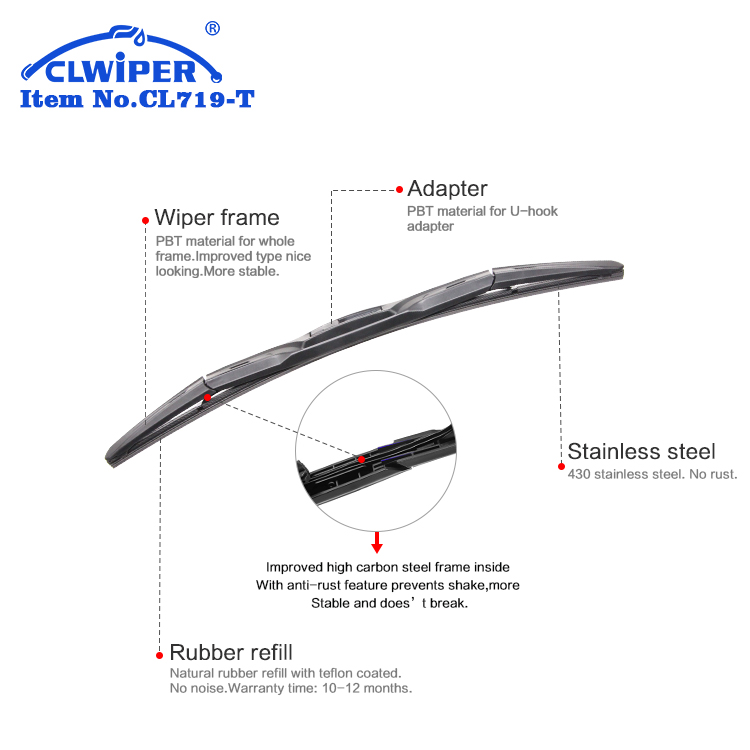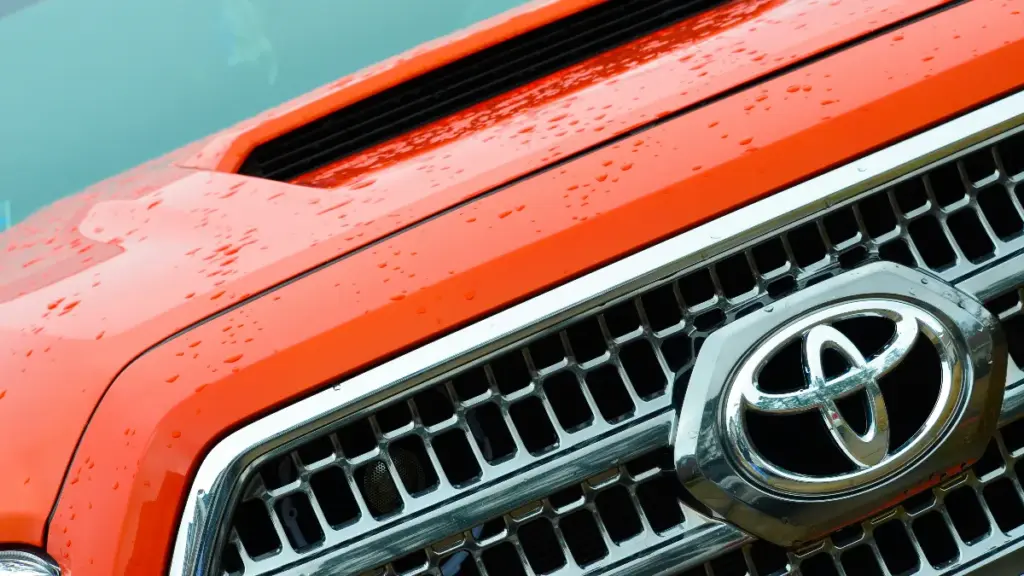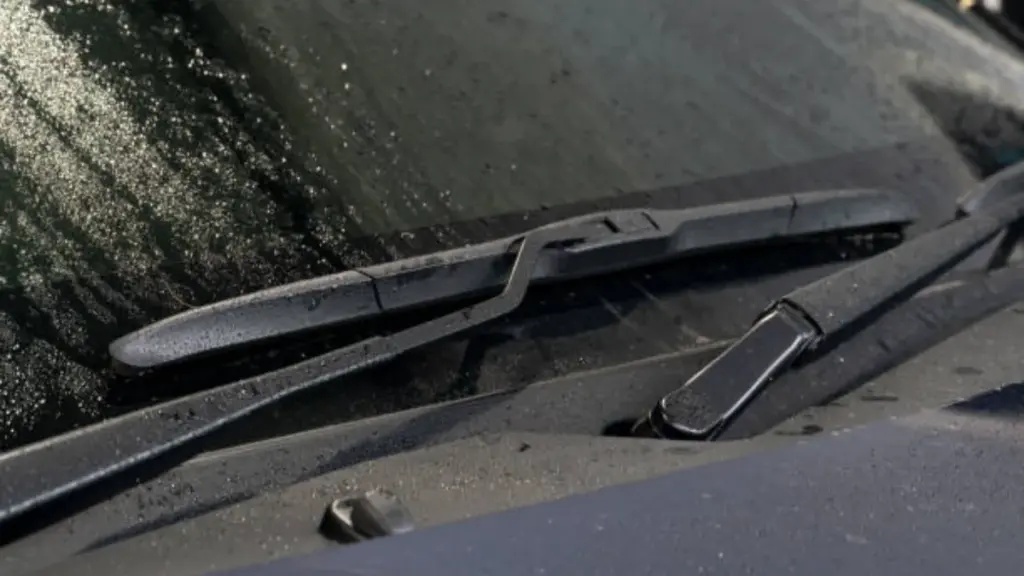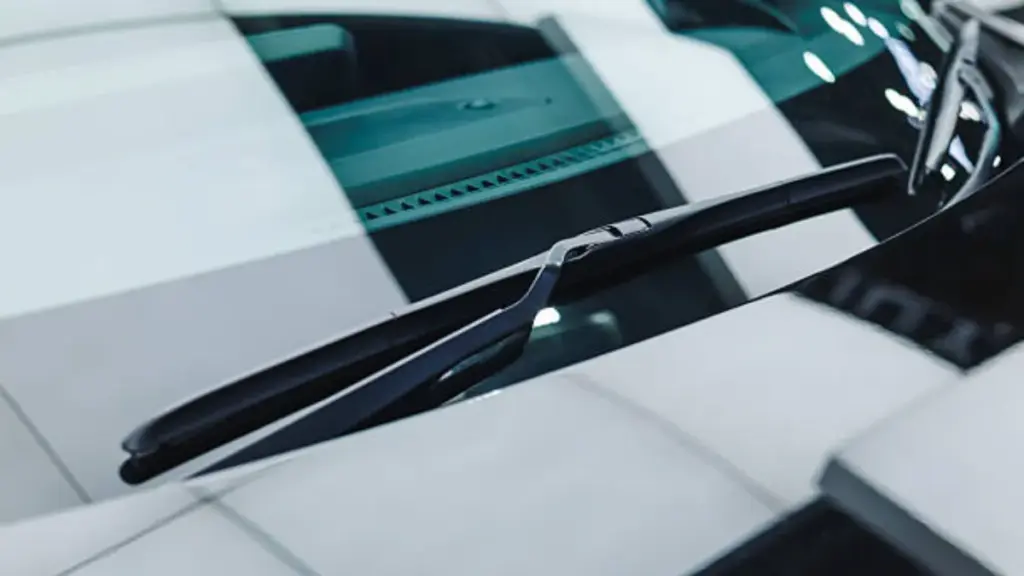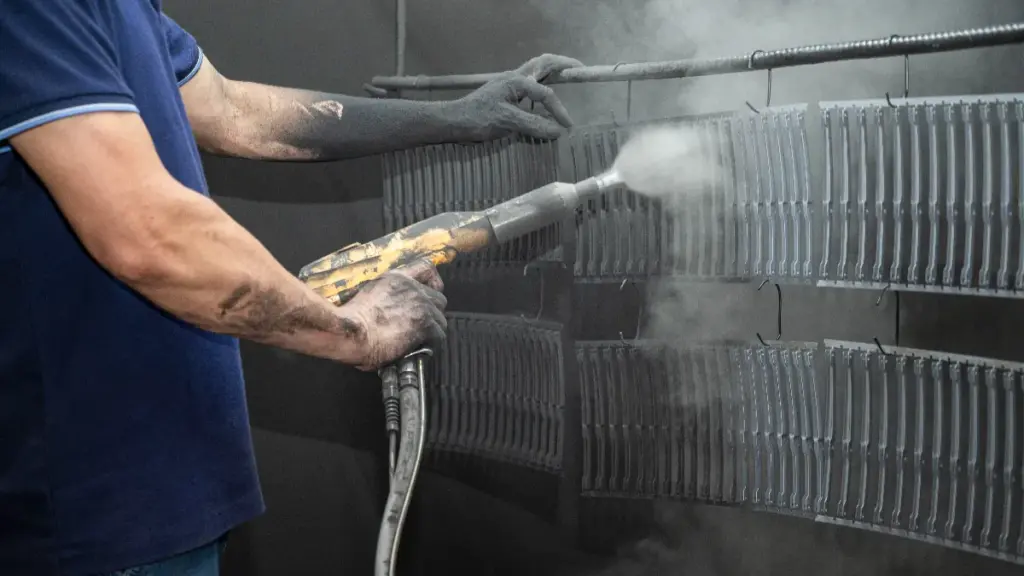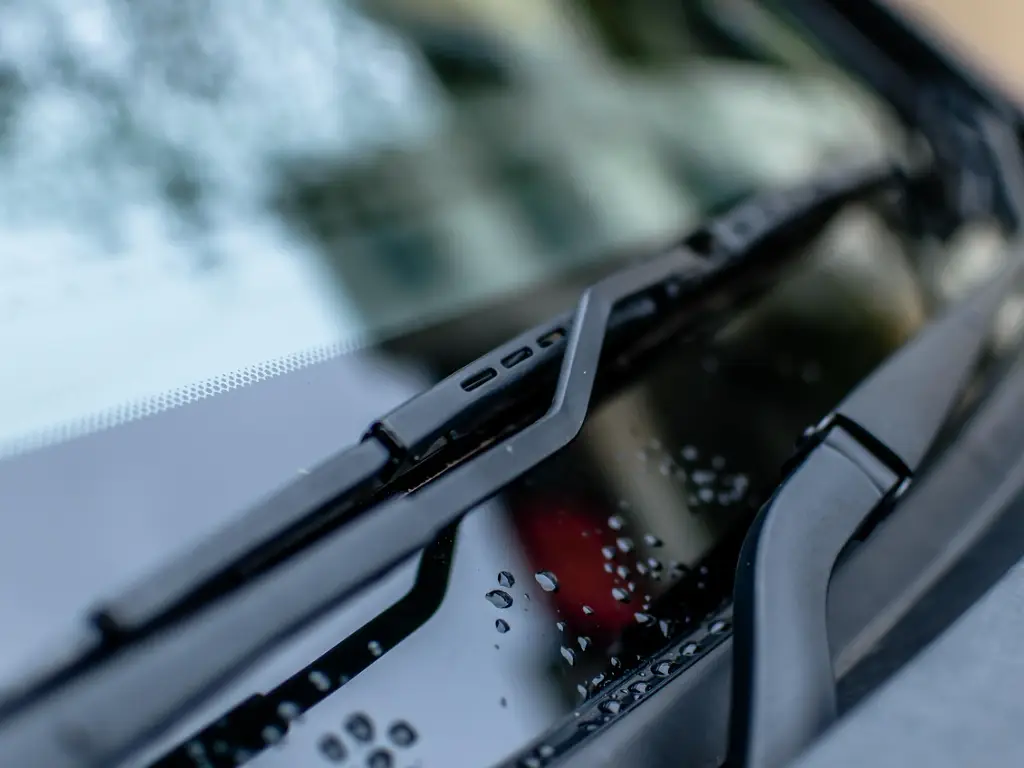I tergicristalli sono essenziali per una guida sicura, eppure molti conducenti se ne accorgono solo quando falliscono. Un tergicristallo rotto o usurato può far piovere, nevicare, o sporco rappresenta un grave pericolo. Prima di sostituire le parti, è importante comprendere i componenti di un sistema di tergicristallo. Questa guida suddivide ogni componente, aiutandoti a identificare i problemi e a scegliere con sicurezza la sostituzione giusta.
Cos'è un tergicristallo e come funziona
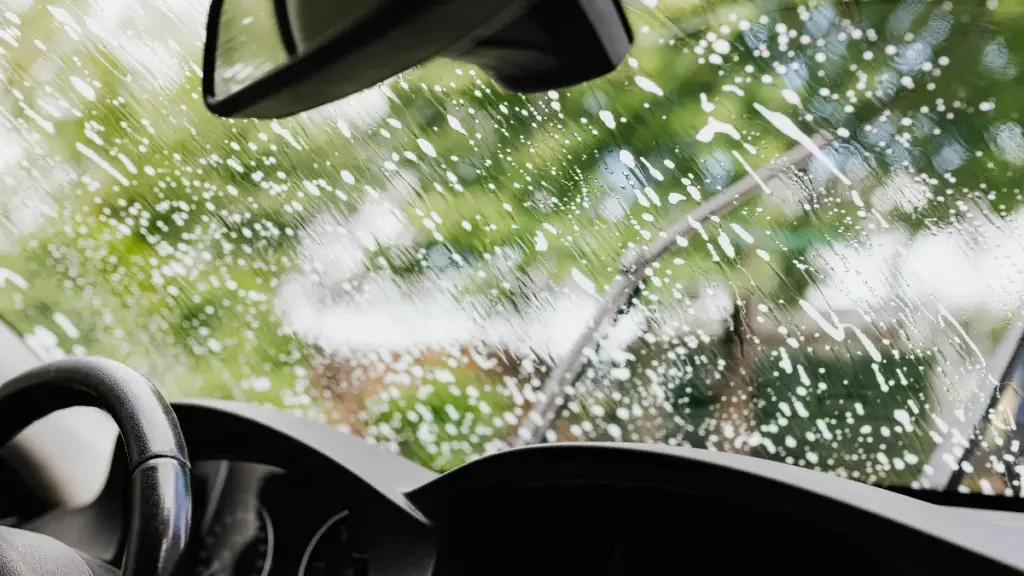
Un tergicristallo è un dispositivo meccanico progettato per rimuovere l'acqua, sporco, e detriti dal parabrezza di un veicolo. Quando attivi i tergicristalli, si avvia un motore elettrico. Questo motore trasferisce la potenza attraverso un sistema di collegamento per muovere i bracci del tergicristallo. Le braccia, a sua volta, spingere le spazzole sul parabrezza. Nel frattempo, il sistema di lavaggio spruzza liquido detergente per rimuovere lo sporco ostinato. Un sistema di pulizia correttamente funzionante garantisce la pulizia, parabrezza senza aloni e migliora la sicurezza di guida generale, soprattutto in condizioni meteorologiche avverse.
Capire perché ogni parte è importante e come funzionano insieme, Vediamo più da vicino i componenti principali di un impianto tergicristallo.
Quali sono le parti di un tergicristallo
Un tipico sistema di tergicristallo è costituito da diversi componenti chiave:
- Motore del tergicristallo
- Collegamento del tergicristallo
- Braccio del tergicristallo
- Lama tergicristallo
- Pompa lavavetri e sistema del fluido
Esaminiamo ciascun componente in dettaglio nella sezione seguente.
1. Motore del tergicristallo
Il motorino del tergicristallo è un piccolo dispositivo elettrico solitamente montato sotto il cofano del veicolo, vicino alla base del parabrezza. La sua funzione principale è fornire la potenza meccanica necessaria per muovere i bracci e le spazzole del tergicristallo. Quando attivato, il motore converte l’energia elettrica della batteria dell’auto in movimento rotatorio, che viene poi trasferito al collegamento del tergicristallo. La maggior parte dei moderni motori dei tergicristalli sono a magneti permanenti o DC senza spazzole, con velocità di rotazione tipicamente comprese tra 30 A 70 Numero di giri a seconda del veicolo e dell'impostazione del tergicristallo.
Un problema comune con i motorini dei tergicristalli è il mancato funzionamento o il movimento intermittente, spesso causato da spazzole usurate, guasti elettrici, oppure un fusibile bruciato. Quando questo accade, i tergicristalli potrebbero fermarsi durante lo scorrimento o muoversi in modo non uniforme, influenzando la visibilità. L'ispezione regolare dei collegamenti elettrici del motore e una corretta manutenzione possono aiutare a prevenire guasti improvvisi e garantire che il sistema dei tergicristalli funzioni in modo affidabile in tutte le condizioni atmosferiche.
2. Collegamento del tergicristallo
Il collegamento del tergicristallo, chiamata anche trasmissione del tergicristallo, è il gruppo meccanico che collega il motorino del tergicristallo ai bracci del tergicristallo. Di solito si trova sotto il pannello del cofano, alla base del parabrezza. Il collegamento converte il movimento rotatorio del motore nel movimento avanti e indietro necessario ai bracci del tergicristallo per spazzare il parabrezza. La maggior parte dei collegamenti sono realizzati in acciaio o lega di alluminio per garantire resistenza mantenendo basso il peso.
I problemi comuni con il collegamento includono boccole usurate, articolazioni allentate, o corrosione. Questi problemi possono causare un movimento non uniforme dei tergicristalli, fare rumori insoliti, o non riescono a raggiungere l'intera estensione del parabrezza. L'ispezione e la lubrificazione regolari delle parti mobili possono prevenire questi problemi e contribuire a mantenerne la coerenza, movimento fluido del tergicristallo in tutte le condizioni atmosferiche.
3. Braccio del tergicristallo
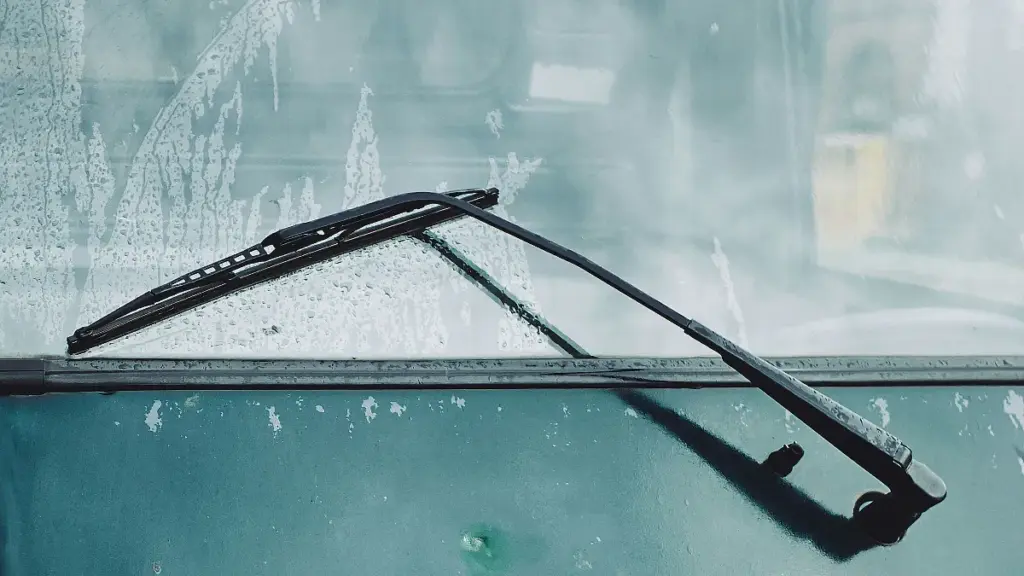
Il braccio del tergicristallo è il componente metallico o composito che collega il collegamento del tergicristallo alla spazzola del tergicristallo. Mantiene la lama all'angolazione corretta ed esercita una pressione costante contro il parabrezza per garantire una pulizia adeguata. Il braccio aiuta inoltre la lama a seguire la curva del parabrezza e a mantenere il pieno contatto durante il funzionamento. La maggior parte dei bracci dei tergicristalli sono montati su un perno e fissati con un dado o una clip, consentendo una facile sostituzione quando necessario.
Tipi di bracci dei tergicristalli
I bracci dei tergicristalli sono disponibili in diversi modelli a seconda del veicolo e del tipo di spazzola:
- Braccio con gancio standard: Il tipo più comune; compatibile con molte lame convenzionali.
- Braccio a perno: Utilizza un piccolo perno per fissare la lama; di solito si trovano su veicoli più vecchi o specializzati.
- Braccio a baionetta: Piatto, design a basso profilo, comune sulle auto europee.
- Braccio ibrido: Combina le caratteristiche dei bracci standard e a basso profilo per migliori prestazioni aerodinamiche alle alte velocità.
4. Lama tergicristallo
La spazzola del tergicristallo è la parte che entra direttamente in contatto con il parabrezza e rimuove l'acqua, sporco, e detriti. È costituito da una striscia di gomma o silicone trattenuta da un telaio di supporto. Il materiale e il design della lama ne determinano la flessibilità, durabilità, e prestazioni in diverse condizioni atmosferiche. Una lama ben mantenuta garantisce una visibilità chiara e riduce striature o salti durante il funzionamento. ClwiperLe spazzole dei tergicristalli utilizzano gomma naturale con finitura rivestita in teflon, offrendo liscio, pulizia silenziosa, forte idrorepellenza, e prestazioni di lunga durata. Forniamo anche OEM e ODM servizi di personalizzazione per soddisfare requisiti specifici del veicolo o esigenze di branding.
Tipi di pale del tergicristallo
- Lame convenzionali: Presentano una struttura in metallo o plastica che contiene una striscia di gomma sostituibile. Sono durevoli ed economici, adatto per la maggior parte dei veicoli.
- Lame di trave: Design monopezzo senza cornice esterna, fornendo una pressione uniforme lungo tutta la lama. Si comportano meglio sui parabrezza curvi e in condizioni di neve o ghiaccio.
- Lame ibride: Combina una struttura del telaio con elementi di design aerodinamici, offrendo la resistenza delle lame convenzionali e il contatto fluido delle lame a trave.
Tipi di connessioni a lama del tergicristallo
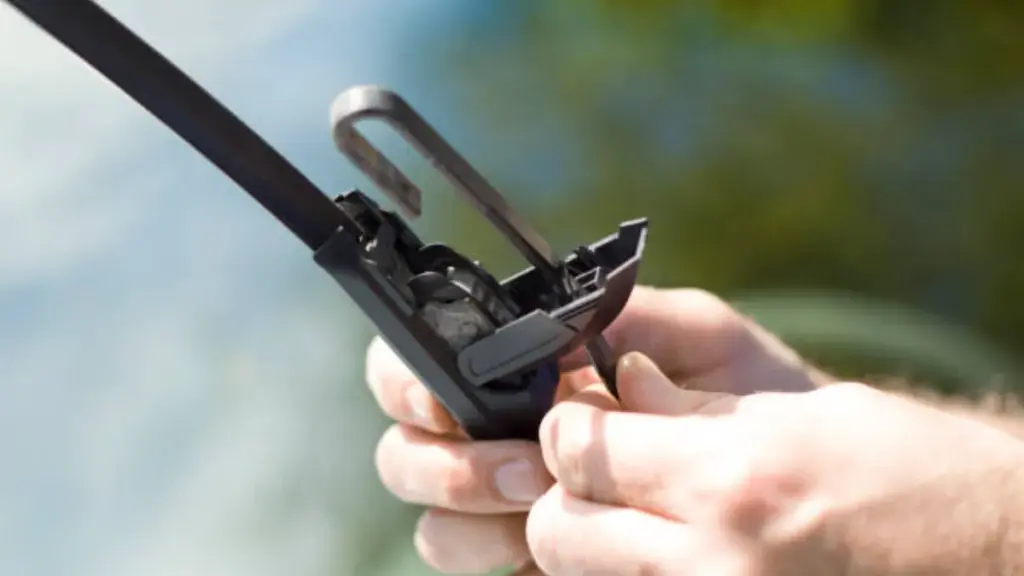
Il meccanismo di connessione determina il modo in cui la lama si attacca al braccio, che è essenziale per un'installazione sicura:
- Connettore a gancio: Il più comune, semplice da installare, compatibile con molti tipi di lame.
- Connettore stile pin: Utilizza un piccolo perno per fissare la lama; richiede la dimensione del perno corrispondente.
- Connettore a baionetta: Design piatto a scatto, spesso presente sui veicoli europei.
- Connettore con blocco laterale: Meccanismo di bloccaggio avanzato utilizzato per lame ibride e a trave.
Per saperne di più: Di quale tipo di spazzola tergicristallo ho bisogno?
Tipi di connessioni a lama del tergicristallo: Una guida tecnica per tutti
5. Pompa lavavetri e sistema del fluido
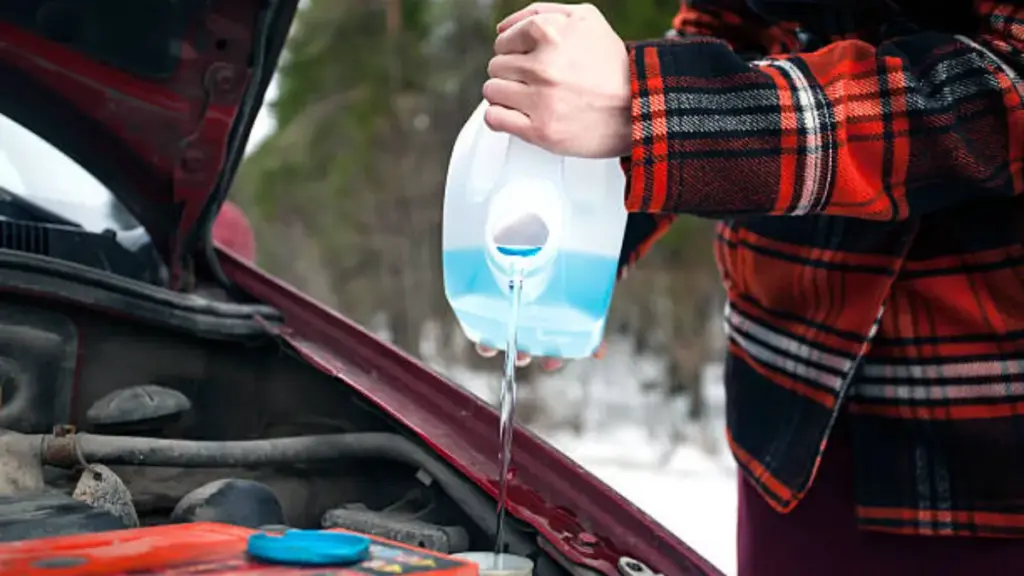
La pompa lavavetro e il sistema del fluido forniscono il liquido detergente al parabrezza, aiutando le spazzole dei tergicristalli a rimuovere sporco e detriti ostinati. La pompa è solitamente un dispositivo elettrico da 12 V situato vicino al serbatoio del fluido. Quando attivato, spinge il liquido lavavetri attraverso i tubi fino agli ugelli, che spruzzano uniformemente il parabrezza. Alcuni veicoli utilizzano ugelli o serbatoi riscaldati per prevenire il congelamento nei climi freddi.
I problemi più comuni includono un ugello ostruito, un tubo ostruito, o un livello del fluido basso, il che può far sembrare che i tergicristalli funzionino male. Come professionista, Consiglio di ispezionare regolarmente il serbatoio e la pompa; Una quantità insufficiente di liquido o un ugello ostruito spesso causano scarse prestazioni di pulizia, che viene erroneamente attribuito alle spazzole dei tergicristalli.
Risoluzione dei problemi comuni nelle parti di un tergicristallo
| Problema / Sintomo | Possibile componente(S) Causa del problema | Soluzione consigliata |
| I tergicristalli non si muovono quando sono accesi | Motore del tergicristallo, fusibile, collegamento elettrico | Controllare e sostituire il fusibile bruciato; ispezionare i collegamenti del motore; sostituire il motore difettoso, se necessario |
| I tergicristalli si muovono lentamente o in modo intermittente | Motore del tergicristallo, collegamento, spazzole usurate | Ispezionare il motore e il collegamento; pulire e lubrificare le articolazioni; sostituire le spazzole o il motore usurati, se necessario |
| I tergicristalli saltellano o vibrano sul parabrezza | Spazzola tergicristallo, braccio del tergicristallo, detriti sul parabrezza | Pulisci il parabrezza e la lama; controllare la tensione del braccio; sostituire la lama usurata o danneggiata |
| Striature sul parabrezza | Spazzola tergicristallo, materiale della lama usurato o indurito, contaminazione | Sostituire la lama usurata; parabrezza pulito; considera le lame con rivestimento in teflon o silicone per prestazioni più fluide |
| I tergicristalli non raggiungono la corsa completa | Collegamento del tergicristallo, braccio, motore | Ispezionare il collegamento per verificare l'eventuale presenza di usura o giunti allentati; regolare o sostituire il braccio; verificare la funzionalità del motore |
| I tergicristalli emettono cigolii o rumori insoliti | Lama, braccio, collegamento, gomma secca | Pulire e lubrificare il collegamento; controllare l'allineamento del braccio; sostituire la lama asciutta o indurita |
| Il liquido lavavetri non spruzza | Pompa lavavetri, serbatoio del fluido, ugelli ostruiti, blocco del tubo | Riempire il serbatoio; ispezionare e pulire gli ugelli ostruiti; controllare il funzionamento della pompa; sostituire i tubi o la pompa difettosi |
| Perdite di fluido dal sistema | Serbatoio, tubo flessibile, guarnizione della pompa | Ispezionare tubi flessibili e guarnizioni; stringere le connessioni; sostituire il serbatoio rotto o i tubi danneggiati |
| I tergicristalli si congelano sul parabrezza quando fa freddo | Lama, liquido lavavetri, condizioni ambientali | Utilizzo lame invernali o lame in silicone; utilizzare liquido lavavetri con antigelo; rimuovere il ghiaccio dal parabrezza prima dell'uso |
| Pulizia irregolare | Lama, braccio, collegamento | Ispezionare la tensione della lama e la pressione del braccio; regolare l'angolazione del braccio; sostituire il collegamento o la lama usurati |
Come consiglio generale, ispezionare il sistema almeno due volte l'anno. Sostituire le lame usurate o lubrificare i collegamenti è molto più economico che risolvere un guasto al motore.
Ottieni componenti per tergicristalli di alta qualità da Clwiper
Se è necessario sostituire o aggiornare le spazzole dei tergicristalli, Clwiper è qui per aiutarti. Siamo un produttore all'ingrosso di spazzole tergicristallo con oltre 20 anni di esperienza nella produzione OEM e ODM. I nostri prodotti principali includono spazzole tergicristallo convenzionali, Spazzole tergicristallo, Spazzole tergicristallo ibride, Spazzole tergicristallo esclusive, Spazzole tergicristallo multifunzionali, e ricariche per spazzole tergicristallo. Con una forte capacità produttiva di 800,000 spazzole tergicristallo al mese e tutti i prodotti certificati CE, garantiamo qualità e affidabilità costanti. Le nostre spazzole tergicristallo vengono esportate in più di 60 paesi e regioni del mondo, servire una vasta gamma di mercati con soluzioni di alta qualità.
Offriamo campioni gratuiti, e MOQ flessibile per soddisfare le diverse esigenze. Contattaci oggi per ottenere spazzole tergicristallo di alta qualità per i tuoi veicoli.

